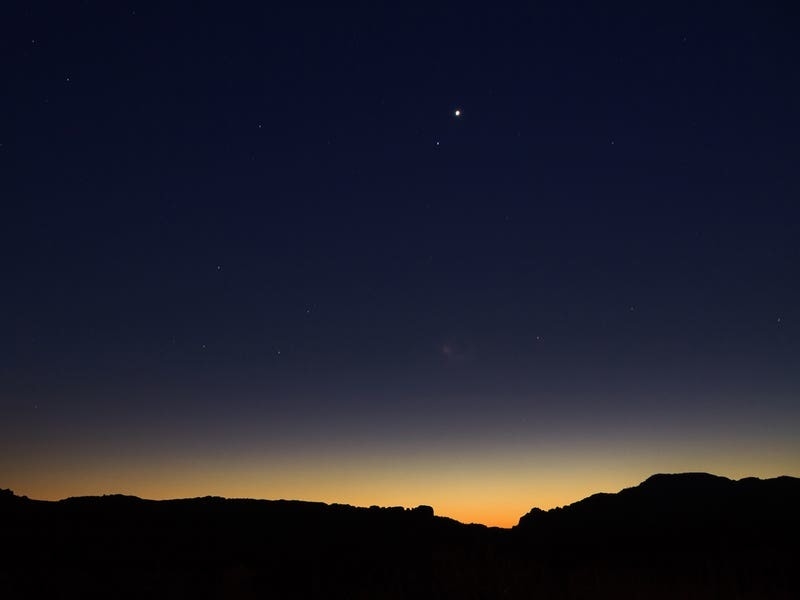Early risers can catch a glimpse of a cosmic event on Sunday morning as Jupiter and Mars appear side-by-side in the sky looking like “very bright stars”.
The planetary conjunction will be visible to the naked eye before sunrise at around 3.40am, but the pair will be extremely low on the southern horizon.
According to astronomer Tom Kerss, of the Royal Observatory Greenwich, the best time to observe the celestial event in the UK will be between 6.30am and 7am, when the planets “will be about 20 degrees above the horizon due south” with Jupiter shining “about 20 times brighter”.
He added: “They should remain clearly visible even as the dawn twilight begins to emerge.

“The planets will initially appear straight down in a vertical line with Jupiter above and Mars underneath, but as they move apart they will appear as a diagonal line, with Jupiter on the top left and Mars on the bottom right.”
Despite being more than 369 million miles apart, the planets will appear to be very close together, forming a nearly straight line with the Earth – an event known in astronomy as a syzygy.
Mr Kerss said: “At just a fraction of a degree apart in the sky, you’ll be able to cover both of them easily using the tip of your little finger on an outstretched arm.”
For sky-gazers wanting to see the planets, Mr Kerss advised making sure the southern view is not obscured by buildings or trees.

“The gas giant, despite being considerably farther away than its small rocky neighbour, will shine about 20 times brighter as seen from Earth.”
While conjunctions are not uncommon, Mr Kerss says the planets’ close approach will be “uncommonly beautiful, particularly when they appear so bright or show colour”.
Mars and Jupiter will not coincide in this way again until March 2020.






